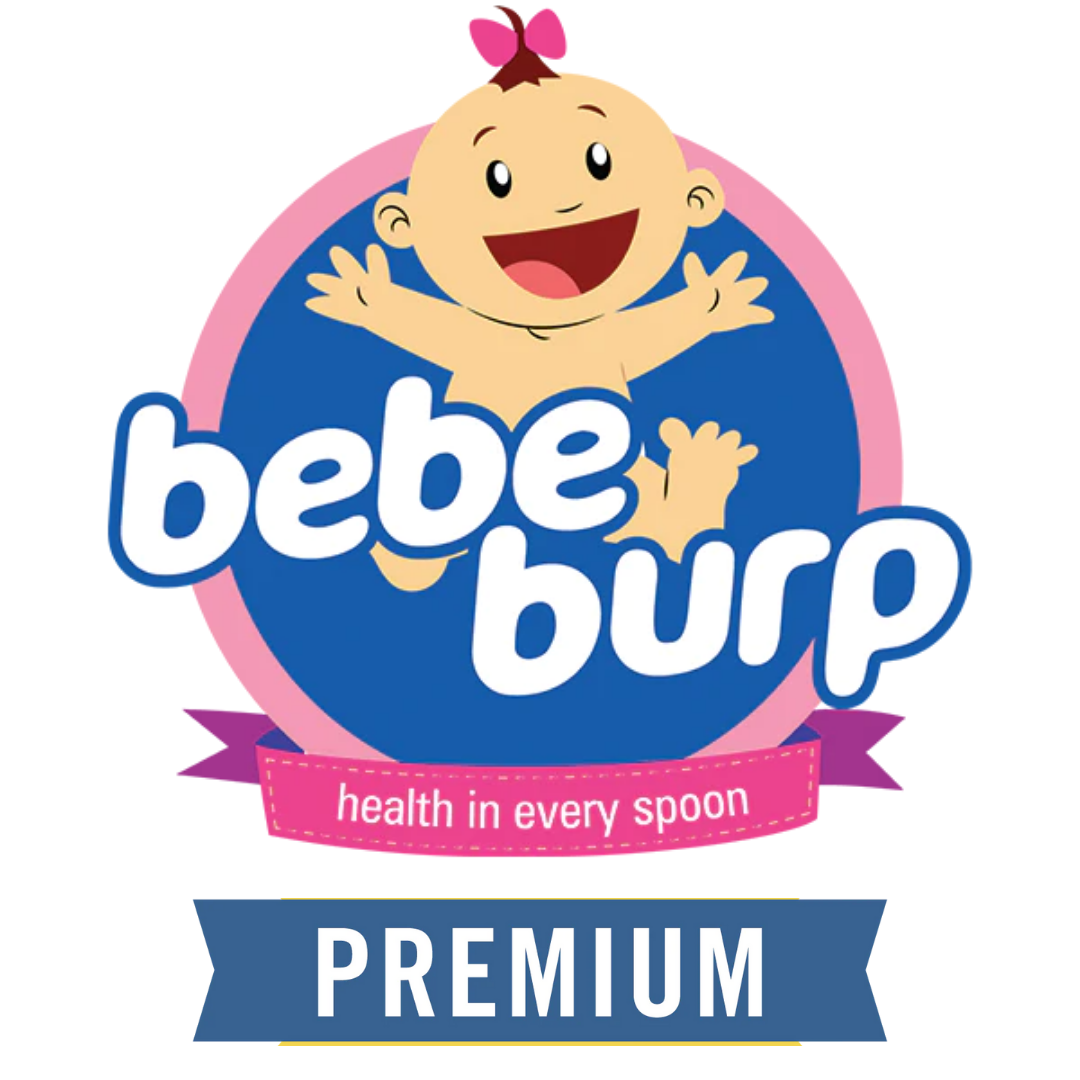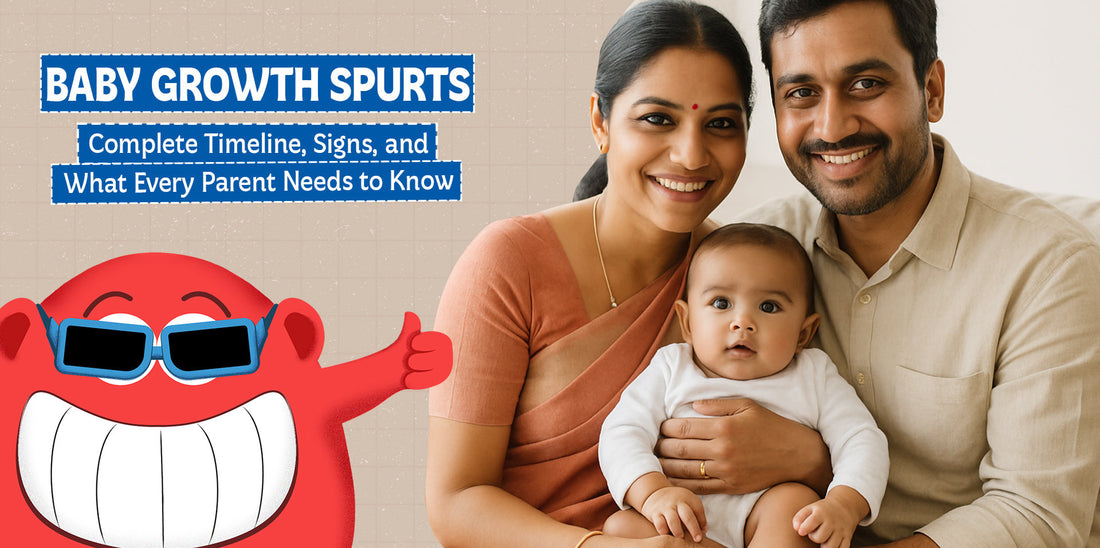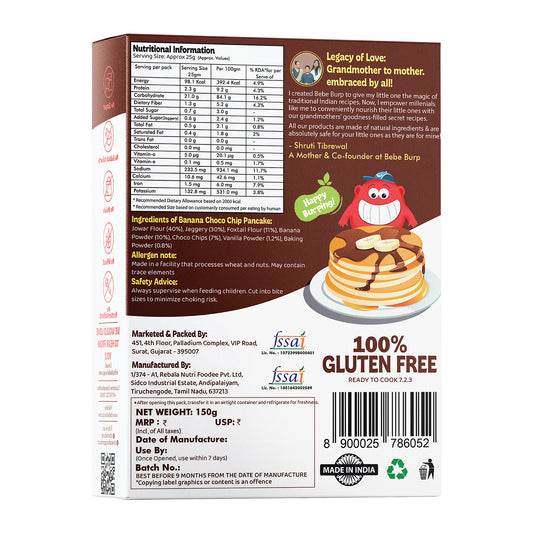When Do Babies Have Growth Spurts?
A baby will experience a number of periods of growth during the first months/first year The spurts may be dramatic and are likely to be between a number of days up to a week. The growth spurts most usually occur at:
-
Around 7–10 days
-
At 2–3 weeks
-
At 4–6 weeks
-
At 3 months
-
At 6 months
- Around 9 months
Growth is not simultaneous in all babies and hence some can take a growth spurt ahead of others. In general, however, these are the usual milestones wherein the parents notice abrupt changes in eating habits, sleep patterns as well as behavior.
Baby Growth Spurts Timeline: Ages and Frequency
Here’s a detailed timeline of typical baby growth spurts:
|
Age |
Description |
|
7–10 Days |
First major growth spurt, frequent feeding. |
|
2–3 Weeks |
Increased appetite and fussiness. |
|
4–6 Weeks |
Physical and neurological development spike. |
|
3 Months |
Noticeable weight gain and length increase. |
|
6 Months |
Rolling, sitting up, and mobility kick in. |
|
9 Months |
Rapid cognitive and physical growth. |
Tip: Growth spurts typically last 2–3 days but can stretch up to a week.
Baby Growth Spurt Symptoms: How to Recognize Them
Keep an eye out on these tell-tale signs:
- Excessive hunger: Your child demands to be nursed or solid feeding more often.
- Fussiness or crankiness: Change of mood; no obvious cause.
- Sleep disturbance: Having a longer sleep or getting woken up frequently.
- Clingy-needs to be held or comforted all the time.
- Observable increase: frequent changes of clothes or diapers outgrowing.
Such symptoms tend to resolve on their own - you only need to provide additional care and support.
Baby Growth Spurt Chart: Tracking Your Baby's Development
A growth chart helps you track your baby's weight, length, and head circumference over time.
|
Age |
Average Weight Gain |
Average Height Growth |
|
0–3 Months |
~150–200g/week |
~2.5–4 cm/month |
|
4–6 Months |
~100–150g/week |
~2 cm/month |
|
6–9 Months |
~85–140g/week |
~1.5–2 cm/month |
|
9–12 Months |
~70–120g/week |
~1.2–1.5 cm/month |
Use your pediatrician’s growth chart to monitor progress at regular checkups.
How to Support Your Baby During Growth Spurts
These are some possible means of assisting your infant in getting through these severe periods:
- On-demand feeding: allow your baby to feed when and how much he/she wants.
- Provide additional comforts: Rock, cuddle and comfort them as much as you can.
- Look out for signs of hunger: Do not wait till they start crying, watch out for sucking, rooting or restlessness.
- Good sleep: Do not allow your baby to sleep less when they look tired.
- Keep calm: This stage is only temporary and necessary to develop.
Promoting Healthy Growth in Babies
In addition to the spurting, you can promote healthy all-over development:
- Breast milk or formula: These are the most major nutritional sources up to the age of 1.
- Solid foods: Start to give solids by the age of 6. (Check out our baby food guide).
- Tummy time: Helps in enhancing physical growth and motor skills.
- Play and talk time: This will enhance brain development as well as bonding.
- Check-ups: Aid in monitoring development and detecting issues before they progress.
Growth Spurts vs. Other Developmental Changes
Not every change means a growth spurt. Here’s how to tell the difference:
|
Growth Spurt |
Developmental Leap |
|
Sudden increased feeding and fussiness |
New skills like rolling or babbling |
|
Lasts a few days |
Lasts 1–2 weeks |
|
Physical changes more visible |
Cognitive and emotional changes more likely |
|
Baby may sleep more or less |
Baby might resist sleep or show frustration |
Tip: Both are normal and often happen together. Keep observing patterns and trust your instincts.
Supporting Yourself During Baby Growth Spurts
Parents can also get exhausted by growth spurts! Take care of yourself in the following way:
- Sleep when baby sleeps
- Feed on good foods and drink water
- Seek the assistance of spouse or family
- Address other parents or be part of support groups
- Stay Mentally Fresh- Even 10 minutes of silence will do
There is nothing you can give when you have nothing to give. Caring about you = welfare of your baby.
Conclusion
Growth spurts in babies are very rapid, vigorous and all normal. Learning to know what time to anticipate them and what to do, you will be able to go through all the leaps in development of your baby with help and support.
Don t forget that each baby is unique so follow your intuition and just keep coming back with love, patience and caring.
FAQs
1. What is the duration of a baby growth spurt?
Ans: 2-3 days usually, or even a week.
2. Does growth spurt hurt sleep?
Ans: Of course, babies do sleep more or even more often wake up.
3. Do still fussiness or tears grow with growth spurt?
Ans: Yes, infants tend to be needy, grumpy, or fussy.
4. During a growth spurt should I alter my feeding schedule?
Ans: Eat on the impulse rather than maintain a rigid timetable.
5. Is it usual that my infant wants to eat constantly?
Ans: Yes--A certain sign of a growth-spurt!












